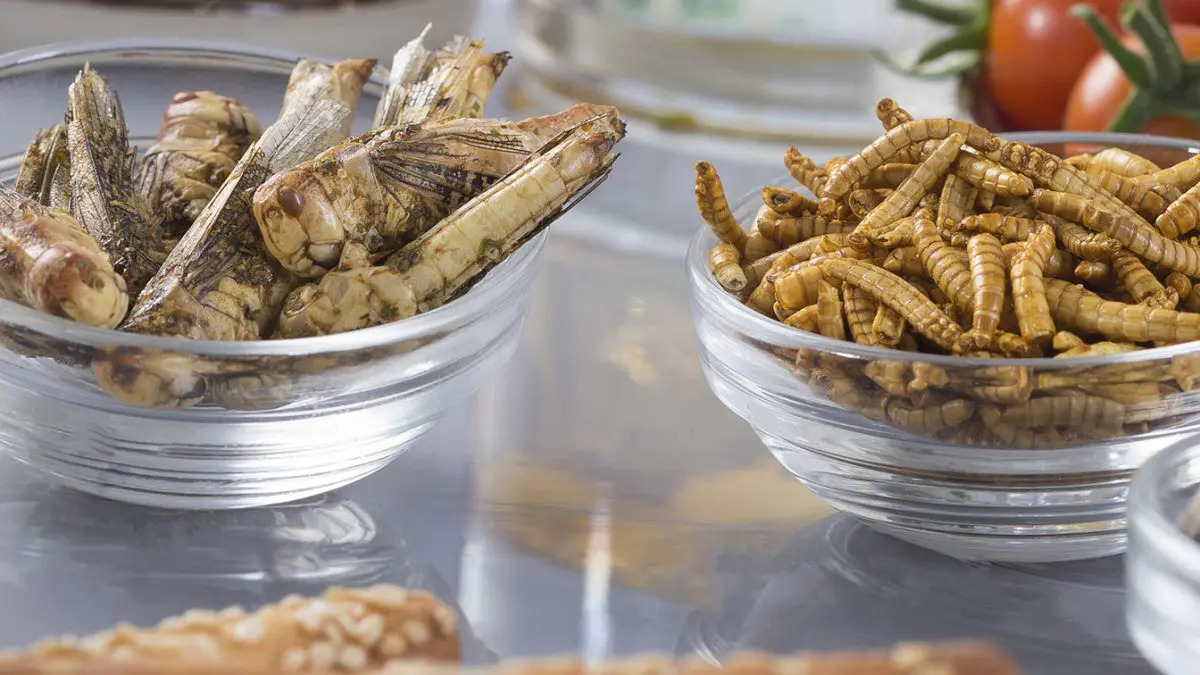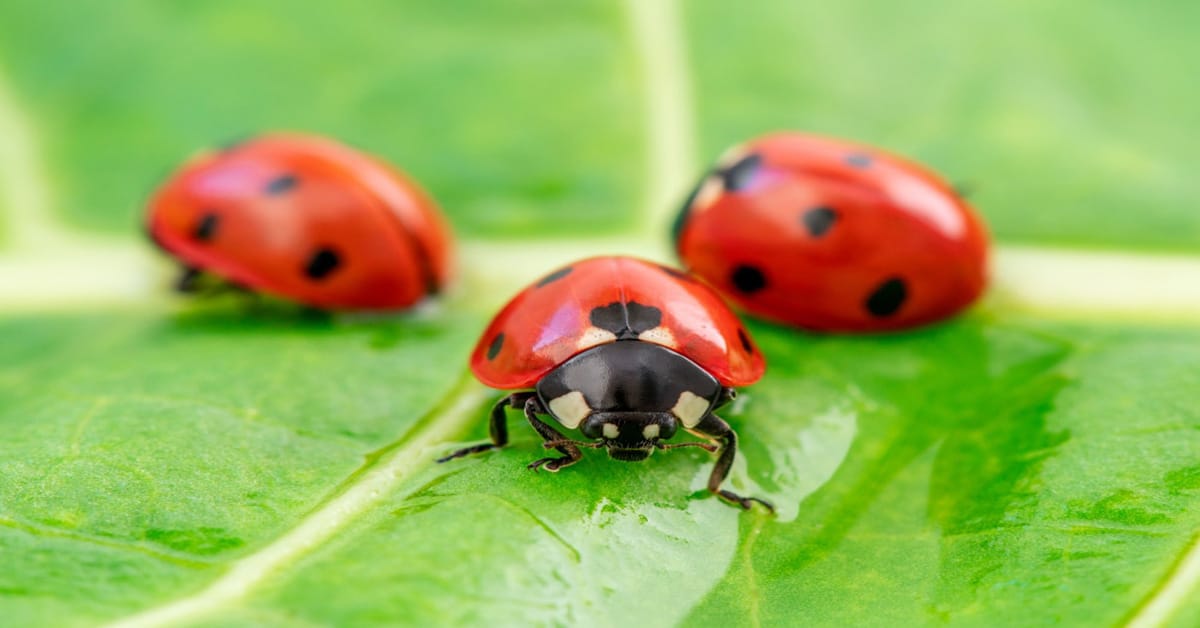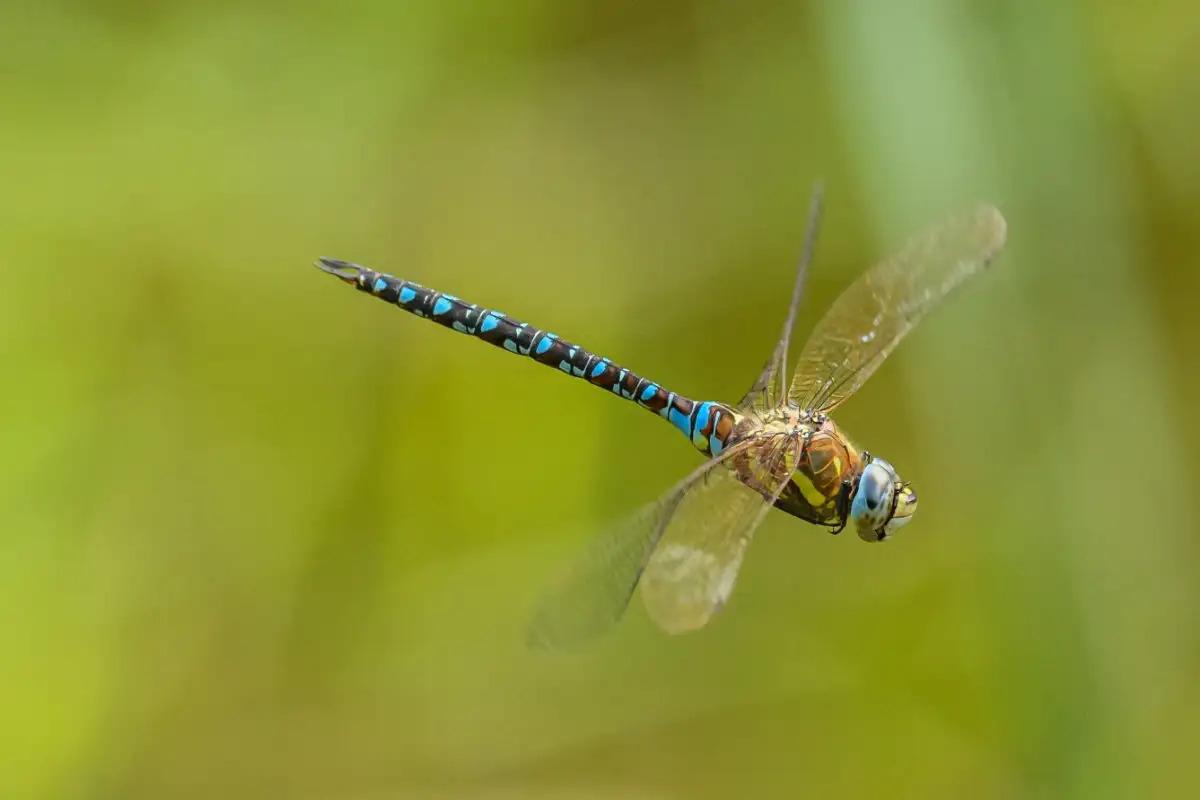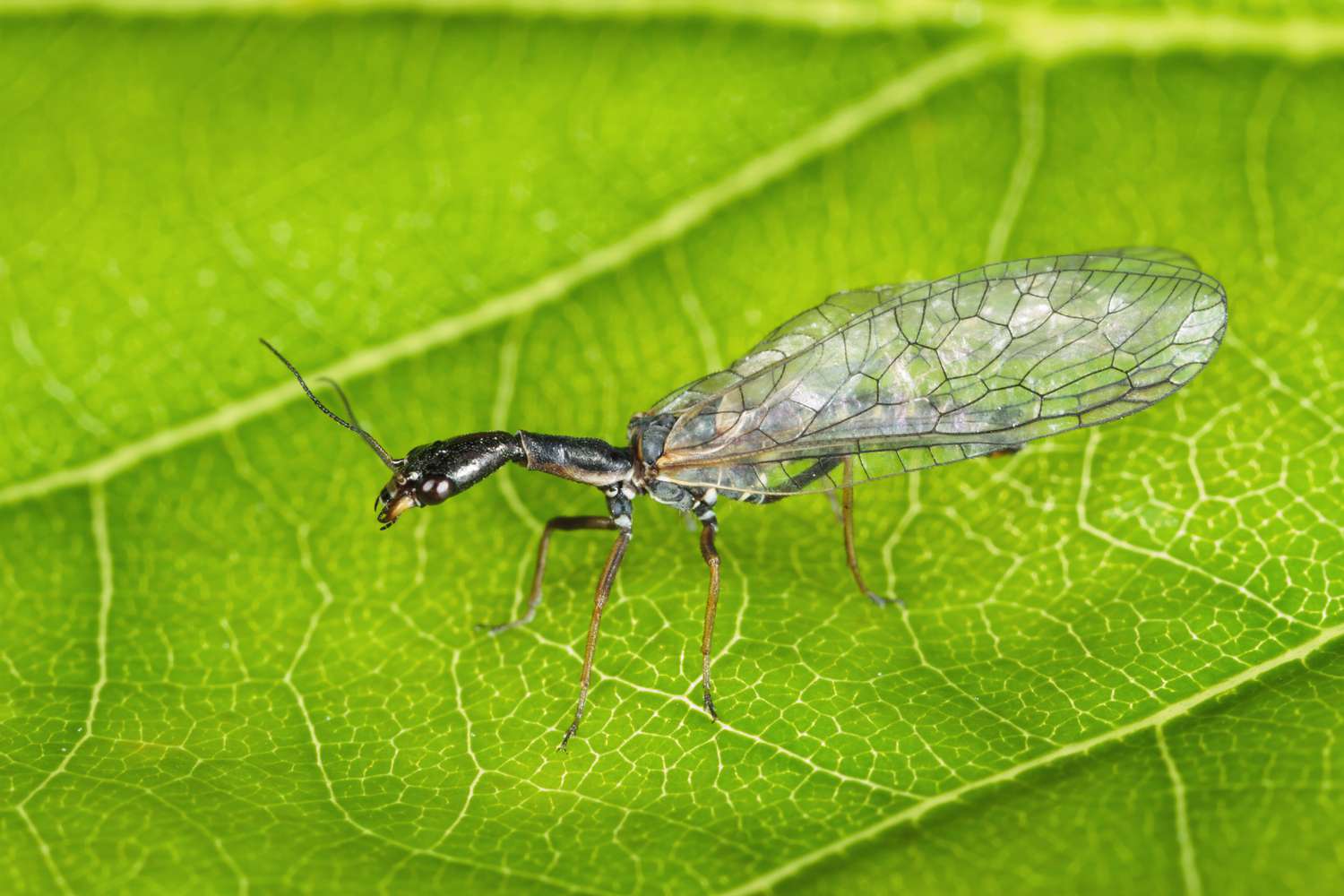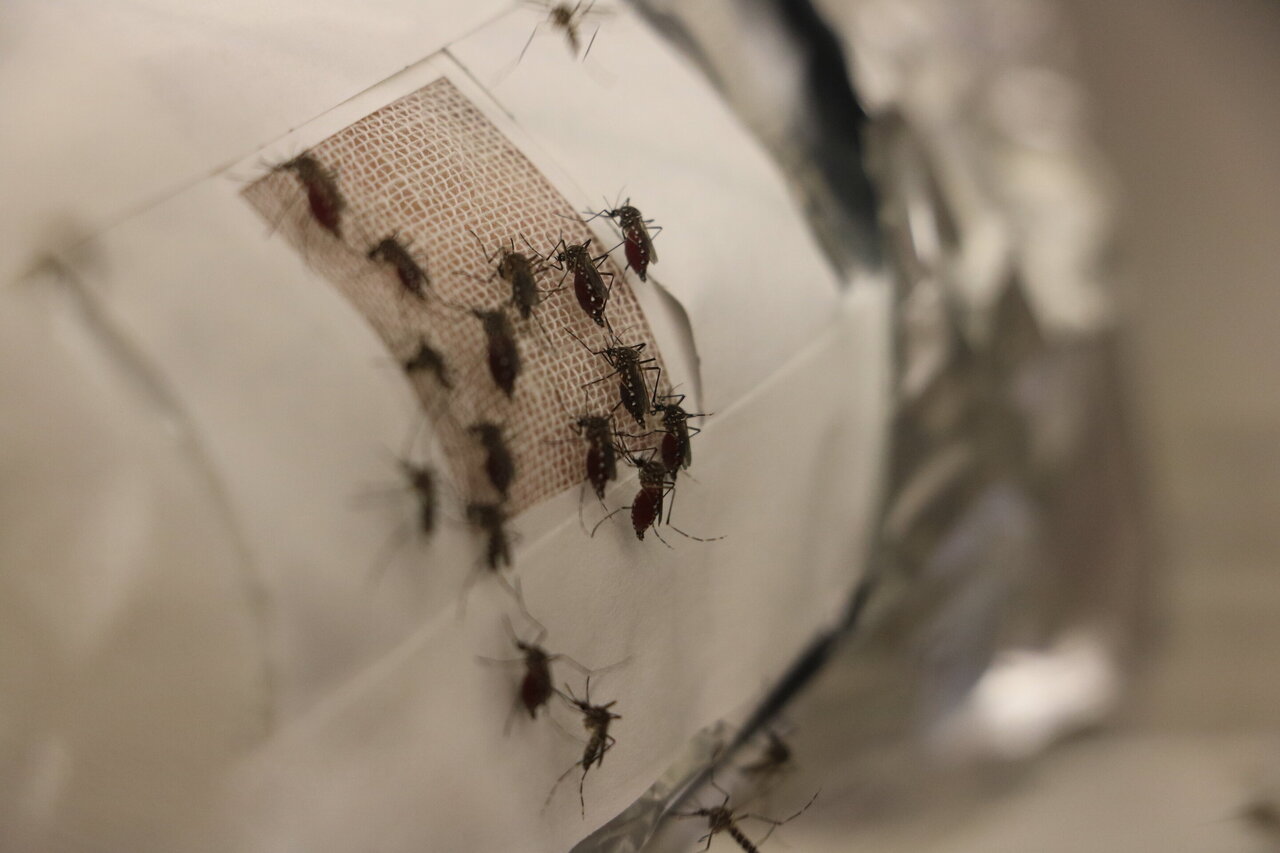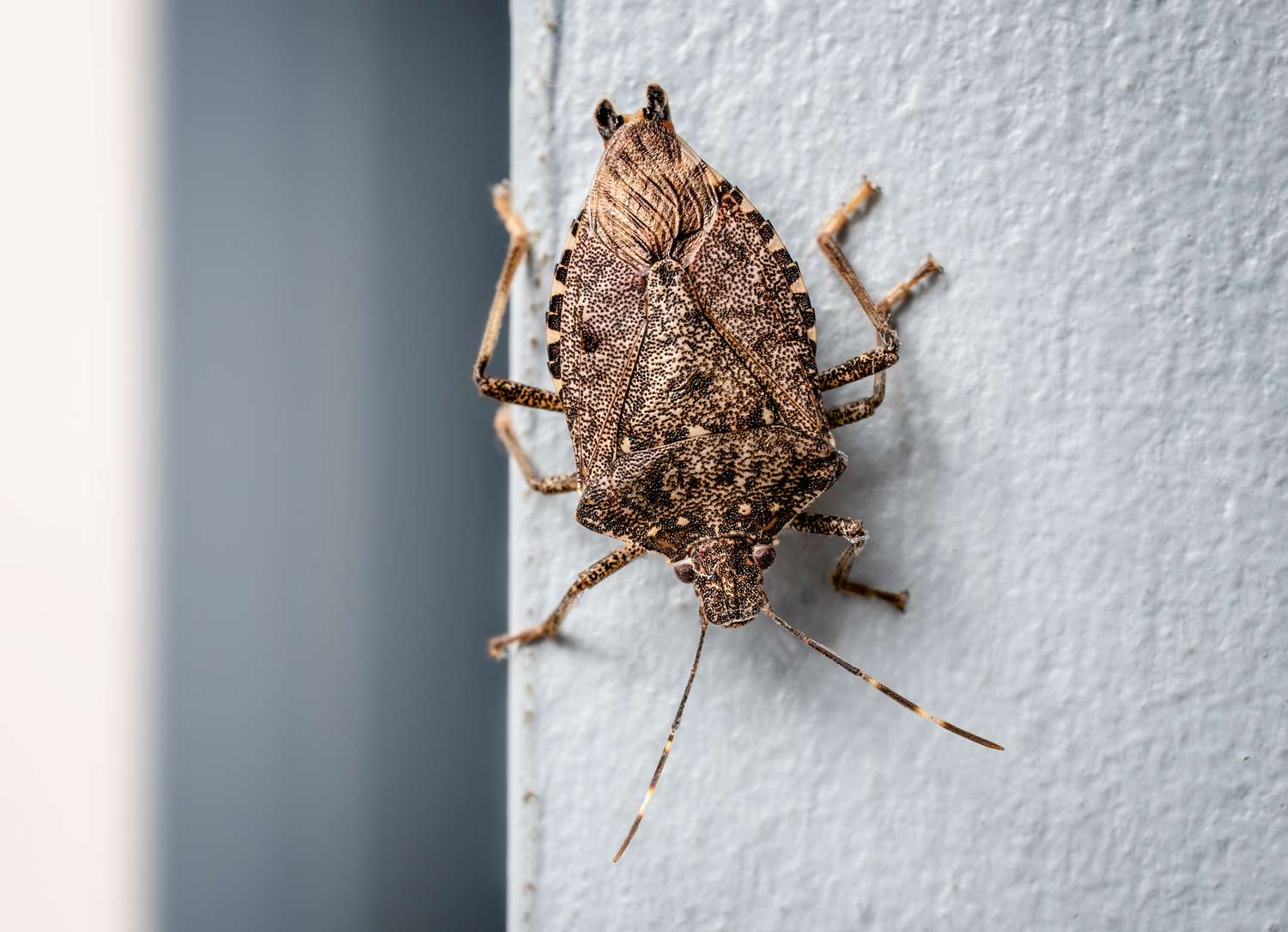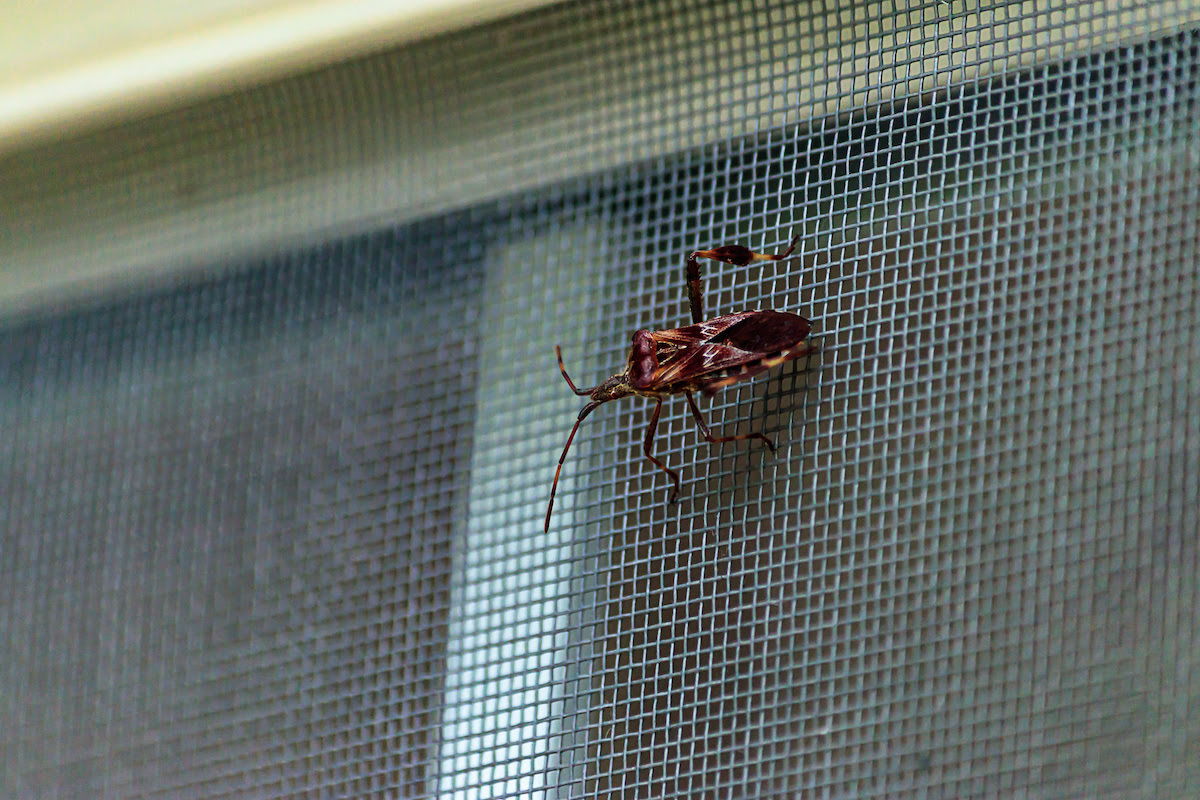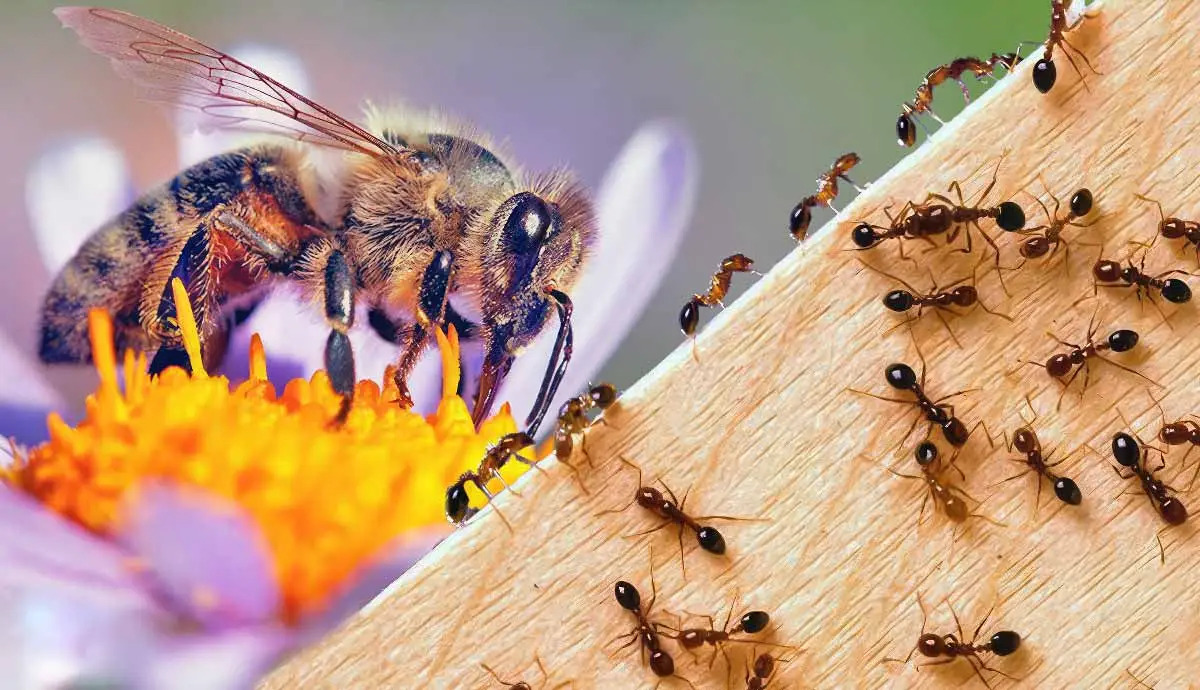Home>Gardening News and Trends>Latest News>How Are Insects Harmful


Latest News
How Are Insects Harmful
Modified: January 22, 2024
Stay updated with the latest news on how insects can be harmful. Learn about the dangers they pose and discover effective ways to protect yourself and your surroundings.
(Many of the links in this article redirect to a specific reviewed product. Your purchase of these products through affiliate links helps to generate commission for Chicagolandgardening.com, at no extra cost. Learn more)
Table of Contents
Introduction
Insects play a crucial role in the ecosystems, contributing to the balance of nature and providing numerous benefits. However, not all insects are harmless. Some species pose threats to various aspects of human life, agriculture, and the environment. Understanding the harmful effects of insects is essential for implementing proper pest control measures and mitigating their impact.
Insects can be detrimental in several ways. They can cause significant damage to crops, spread diseases, trigger human allergies, damage property and structures, contaminate food, and impose substantial economic costs. Moreover, their presence can have adverse environmental consequences.
One of the primary concerns with harmful insects is their ecological impact. These insects can disrupt the delicate balance of ecosystems by disrupting food chains and outcompeting native species for resources. They can also contribute to the decline of certain plant or animal populations, affecting biodiversity. When the natural balance is disrupted, it can have cascading effects on other organisms and ecological processes.
Agriculture is one of the sectors most affected by harmful insects. Pests like aphids, caterpillars, and beetles can decimate crops, leading to reduced yields and financial losses for farmers. They can chew on leaves, stems, and fruits, destroying the plants and compromising their ability to produce food. In extreme cases, entire crops may be wiped out, resulting in food shortages and increased prices.
In addition to causing economic losses, some insects are responsible for transmitting diseases. Mosquitoes, for example, can transmit deadly diseases like malaria, dengue fever, and Zika virus. Ticks can spread Lyme disease. These diseases can have severe health consequences, impacting individuals and communities alike.
Furthermore, insects can trigger allergies in humans. The proteins present in the saliva, feces, and body parts of certain insects can cause allergic reactions. For some individuals, this can result in skin irritation, respiratory problems, and even life-threatening anaphylaxis. Common allergenic insects include bees, wasps, and certain types of ants.
Ecological Impact
Harmful insects can have a significant ecological impact, disrupting the delicate balance of ecosystems and causing a ripple effect throughout the natural environment. When insect populations increase beyond their natural levels, they can outcompete native species for resources and disrupt important ecological processes.
One of the main ways harmful insects impact ecosystems is by altering food chains. For example, invasive species like the Asian longhorned beetle can infest and kill trees, disrupting the food source for other species that rely on those trees for shelter and food. This can lead to a decline in populations of birds, mammals, and insects that depend on these trees for survival.
Moreover, harmful insects can directly impact plant populations through feeding and destruction. Insects like grasshoppers and locusts, known as voracious herbivores, can decimate vegetation, leading to a loss of plant diversity and a decline in overall biomass. This, in turn, can disrupt the entire ecosystem, affecting the availability of food and habitat for other organisms.
Invasive insects can also outcompete native species, leading to a decrease in biodiversity. They often have no natural predators in their new environment, which allows their populations to grow unchecked. As they multiply, they consume resources that would otherwise be available to native species, leading to a decline in their numbers. This reduction in biodiversity can disrupt intricate ecological relationships and compromise the stability of ecosystems.
Additionally, harmful insects can have indirect effects on the ecosystem. For instance, when insects feed on plants, they can weaken them, making them more susceptible to disease and other types of damage. Weakened plants may experience decreased growth or die off completely, further impacting the organisms that rely on those plants for food and shelter.
To mitigate the ecological impact of harmful insects, it is crucial to implement effective pest control measures. This includes proper monitoring and early intervention to prevent the establishment and spread of invasive species. It also involves promoting biodiversity and healthy ecosystems through measures such as planting diverse native species and reducing the use of harmful pesticides that can harm beneficial insects.
Agriculture Damage
Harmful insects pose a significant threat to agriculture, causing extensive damage to crops and leading to substantial economic losses for farmers and the agricultural industry as a whole. These insects have the potential to devastate entire farms, impacting food production and the availability of essential crops.
One of the most common ways harmful insects damage agriculture is through direct feeding on crops. Insects such as aphids, caterpillars, and beetles have voracious appetites and can quickly strip plants of their leaves, fruits, or seeds. This not only reduces the yield but also weakens the plants, making them more susceptible to diseases and other environmental stresses.
In addition to feeding damage, some insects also transmit plant diseases. For instance, the tiny insects known as leafhoppers can carry and spread viral diseases that can severely impact the health and productivity of crops. These diseases can cause stunted growth, yellowing of leaves, and even result in plant death. Controlling the insect vectors is essential for preventing the spread and transmission of these plant diseases.
Another way harmful insects impact agriculture is through tunneling or burrowing into crops. Insects like corn borers and cabbage root maggots bore into the stems, roots, or fruits of plants, causing physical damage and compromising their structural integrity. This can lead to wilting, plant death, and an overall reduction in crop quality and market value.
Furthermore, harmful insects can have a direct impact on the economic viability of farming operations. Farmers may incur significant financial losses due to decreased crop yields or complete crop failure. An infestation of damaging insects can necessitate additional expenses for pest control measures, such as the use of insecticides or biological controls, further contributing to the economic burden.
To mitigate the damage caused by harmful insects in agriculture, integrated pest management (IPM) practices are often employed. This approach involves a combination of strategies, including crop rotation, biological control, cultural practices, and judicious use of insecticides. By implementing IPM, farmers can minimize the reliance on chemical pesticides, reduce environmental impacts, and maintain the sustainability of agricultural systems.
Disease Transmission
Harmful insects are not just a nuisance; they can also be carriers of deadly diseases. Many insects have the ability to transmit pathogens, including bacteria, viruses, and parasites, that can cause illnesses in humans, animals, and even plants. Understanding the role of these insects in disease transmission is crucial for protecting public health and preventing outbreaks.
Mosquitoes are notorious disease vectors and are responsible for transmitting some of the most dangerous diseases worldwide. Diseases such as malaria, dengue fever, Zika virus, and West Nile virus are all transmitted by various species of mosquitoes. When mosquitoes bite an infected individual, they can then transmit the pathogens to other people through subsequent bites. This transmission cycle can lead to widespread outbreaks and significant public health concerns.
Ticks are another important vector for disease transmission. They can transmit diseases such as Lyme disease, babesiosis, and anaplasmosis. These diseases can have long-term health consequences and may require extensive medical treatment. Tick-borne diseases are particularly prevalent in areas with high tick populations, raising concerns for people who live or work in forests, grasslands, or areas with dense vegetation.
Fleas are known to transmit diseases to both humans and animals. The most notorious example is the bubonic plague, caused by the bacterium Yersinia pestis, which is transmitted to humans through flea bites. Although cases of the bubonic plague are rare today, fleas still pose a risk by transmitting other diseases, such as typhus and Bartonella infection.
In addition to mosquitoes, ticks, and fleas, other insects can also contribute to disease transmission. For example, flies can carry pathogens like E. coli and Salmonella, which can contaminate food and lead to gastrointestinal illnesses. Cockroaches, known for their association with unsanitary conditions, can also spread disease-causing organisms, including allergens that can exacerbate respiratory conditions.
Preventing and controlling the spread of diseases transmitted by harmful insects requires a multi-faceted approach. Public health measures, such as mosquito control programs, insecticide use, and personal protective measures like wearing long sleeves and using insect repellents, can help reduce the risk of infections. Additionally, education and awareness campaigns about proper hygiene, sanitation, and vector-borne diseases are essential in minimizing the impact of diseases transmitted by these insects.
Human Allergies
Harmful insects can pose a threat to human health by triggering allergic reactions. Certain individuals may have allergic sensitivities to the proteins present in the saliva, feces, or body parts of these insects. When exposed to these allergens, they may experience a range of symptoms, from mild discomfort to severe allergic reactions.
One of the most common insects associated with allergies is the bee. Bee stings can cause localized swelling, pain, and itching in most people. However, for those with bee sting allergies, a single sting can lead to a severe allergic reaction called anaphylaxis. Anaphylaxis is a life-threatening condition characterized by difficulty breathing, swelling of the throat, and a drop in blood pressure. Immediate medical attention is required to treat anaphylaxis.
Wasps and hornets can also trigger allergic reactions, both through stinging and even by coming into contact with their venom. Symptoms of wasp and hornet allergies can range from mild swelling and redness to more severe reactions similar to bee sting allergies. Additionally, some ants, particularly fire ants, can cause allergic reactions that range from mild itching and redness to more severe reactions, including blistering and swelling.
Insects like mosquitoes and fleas can also cause allergic reactions in some individuals. Mosquito bites can result in itching, redness, and swelling. In some cases, people may develop severe inflammation known as skeeter syndrome, characterized by intense swelling and discomfort. Flea bites can lead to a condition called papular urticaria, which causes itchy, red, and inflamed skin lesions.
When it comes to allergies, prevention is key. For individuals who are aware of their insect allergies, taking appropriate precautions is essential. This may include avoiding areas where the allergenic insects are commonly found, using insect repellents and protective clothing when outdoors, and seeking prompt medical attention if an allergic reaction occurs.
If a severe allergic reaction to an insect sting or bite has been experienced in the past, it is generally recommended to consult with an allergist. They can perform tests to determine the specific insect allergen and develop an individualized management plan. Treatment options may include carrying an epinephrine auto-injector (EpiPen) for emergency use and considering allergen immunotherapy (allergy shots) to potentially reduce the severity of future allergic reactions.
Property Damage
Harmful insects not only affect agriculture and human health but also pose a threat to property. These insects can cause damage to structures, belongings, and even the overall integrity of buildings. Understanding the potential for property damage caused by insects is crucial for taking preventative measures and protecting one’s investments.
One of the primary concerns when it comes to property damage is the presence of termites. Termites are notorious for their ability to feed on wood and other cellulose-based materials. When termites infest a property, they can silently and relentlessly feed on structural elements, including wooden beams, floors, and furniture, leading to weakening and potential collapse over time. Termite damage often goes unnoticed until significant structural deterioration has already occurred.
Carpenter ants are another insect species that can cause property damage. These ants excavate galleries in wood to create nesting sites. While they do not consume wood like termites, the tunneling activity of carpenter ants can weaken the structural integrity of wooden structures. If left unchecked, carpenter ant infestations can result in costly repairs and compromised safety.
Other insects, such as moths and carpet beetles, can damage fabric and textiles. The larvae of these insects feed on natural fibers like wool, silk, and cotton, resulting in holes, discoloration, and overall deterioration of carpets, clothing, upholstery, and other household items. Infestations of these insects can require thorough cleaning, treatment, and, in severe cases, replacement of affected materials.
In addition to structural damage and fabric destruction, certain insects can also cause damage to electrical systems. For example, rodents like rats and mice can gnaw on electrical wires, increasing the risk of electrical malfunctions, short circuits, and potential fire hazards. These pests not only cause damage to wiring but also put homeowners at risk of electrical shock or electrocution.
To prevent property damage caused by insects, it is crucial to implement proactive measures. Regular inspections for signs of termite activity, such as mud tubes or hollow-sounding wood, can help detect infestations early on. Maintaining cleanliness and proper storage practices can deter fabric-destroying insects. Sealing entry points and employing effective pest control strategies can help minimize the risk of rodents causing damage to electrical systems.
Structural Damage
Harmful insects can pose a significant threat to the structural integrity of buildings and other structures. These insects have the ability to burrow, tunnel, or weaken various construction materials, leading to potential damage and compromise of the overall stability of the structure. Understanding the potential for structural damage caused by insects is crucial for taking preventative measures and preserving the integrity of buildings.
One of the primary culprits of structural damage is the carpenter bee. Unlike other species of bees, carpenter bees bore into wood to create their nests. Over time, their tunneling activity can result in extensive damage to wooden beams, frames, doors, and other wooden components of a structure. The accumulation of carpenter bee activity can weaken the wood and compromise the stability of the affected areas.
Similarly, wood-boring beetles, such as the powderpost beetle and the old house borer, can also cause structural damage. These beetles lay their eggs in wood, and the larvae feed on the wood as they develop. The tunneling activity of the larvae weakens the wood, resulting in structural deterioration that can impact the integrity of the building.
Termite infestations can also lead to significant structural damage. Termites feed on wood and cellulose-based materials, relentlessly consuming and tunneling through the structural components of a building. Left unchecked, termite activity can weaken foundations, beams, floors, and other wooden elements, compromising the overall stability and safety of the structure. It is important to note that termite damage is often not immediately visible, and infestations can go undetected for extended periods.
In addition to these wood-destroying insects, certain species of ants can also contribute to structural damage. Carpenter ants, for example, excavate galleries in wood to create their nests, similar to termites. This activity weakens the wood, potentially leading to sagging floors, weakened supports, and other structural issues.
To prevent structural damage caused by harmful insects, regular inspections are crucial. Look for signs of damage, such as wood dust, holes, or weakened wood, especially in areas prone to infestations. Promptly address any issues identified, such as hiring professionals for termite treatments or carpenter bee control. Applying protective coatings or sealants to wooden structures can also provide an additional layer of defense against insect damage.
Food Contamination
Harmful insects can pose a significant risk of contaminating food, leading to potential health hazards for consumers. These insects can contaminate food products during various stages, including production, processing, storage, and transportation. Understanding the risks associated with food contamination by insects is essential for implementing proper sanitation and pest management practices to ensure food safety.
Flies, such as house flies and fruit flies, are known for their ability to carry and spread pathogens. These insects can land on food surfaces, leaving behind traces of bacteria, viruses, or parasites they may have picked up from other contaminated sources, including garbage, decaying organic matter, or unsanitary environments. This can introduce harmful microorganisms onto the food, increasing the risk of foodborne illnesses.
Cockroaches are another common insect that can contaminate food. These resilient pests can carry and spread various pathogens, including Salmonella, E. coli, and Staphylococcus aureus, through their body surfaces and feces. Cockroaches are known to crawl over food preparation surfaces, utensils, and stored food items, potentially transferring harmful bacteria.
Stored-product insects, such as beetles, weevils, and moths, can also contaminate food items in storage facilities. These insects infest and lay eggs in grains, cereals, spices, and other stored food products. As the eggs hatch and larvae feed, they can cause physical damage to the food and produce toxins that can render the food inedible or unsafe for consumption.
In addition to carrying pathogens and physically damaging food items, insects can also contribute to the spoilage of perishable goods. For example, fruit flies can lay eggs in ripe or decaying fruits, which can accelerate the spoilage process and render the fruit unsuitable for consumption. Similarly, certain species of beetles and weevils can infest stored grains and cause them to become moldy or rancid.
To prevent food contamination by insects, it is crucial to implement comprehensive pest control measures throughout the entire food supply chain. This includes regular inspections, proper sanitation practices, and effective pest management strategies. Ensuring that food storage areas are clean, well-sealed, and free of any visible signs of insect activity is essential in preventing infestations and minimizing the risk of contamination.
Additionally, implementing strict hygiene practices in food preparation areas, such as regularly cleaning surfaces, properly storing food items, and promptly disposing of waste, can help reduce the presence and attraction of insects. Regular monitoring and testing of food products for microbial and insect contamination can also help identify and mitigate potential risks to food safety.
Economic Costs
Harmful insects can impose significant economic costs on various sectors, including agriculture, public health, and property maintenance. The financial burden associated with managing and mitigating the impact of these insects can be substantial, affecting individuals, businesses, and even governments.
In the agricultural sector, the damage caused by pests can result in significant economic losses for farmers. Insects like aphids, caterpillars, and beetles can decimate crops, leading to reduced yields, lower quality produce, and increased production costs. Farmers may have to invest in pest control measures, such as the use of insecticides or biological controls, in an effort to protect their crops and minimize financial losses.
The economic costs extend beyond agriculture. Insect-borne diseases, such as malaria, dengue fever, and Lyme disease, can place a considerable strain on healthcare systems, leading to increased medical expenses and reduced workforce productivity. Prevention and treatment measures, such as mosquito control programs and the development of vaccines or treatments, require significant financial resources.
Property damage caused by damaging insects can also result in economic costs. Infestations of termites, carpenter ants, and wood-boring beetles can necessitate expensive repairs and even structural renovations. Homeowners may have to invest in professional pest control services to eliminate the infestations and prevent further damage, adding additional financial burden.
The presence of harmful insects can also have indirect economic impacts. For example, tourism and outdoor recreational industries may suffer if popular destinations are perceived as being infested with mosquitoes, ticks, or other disease-transmitting insects. The costs associated with implementing mosquito control programs or distributing educational materials to prevent the spread of diseases can burden local businesses and governments.
Moreover, the food industry can incur economic losses due to food contamination caused by insects. Contaminated food products may be recalled, leading to financial losses for manufacturers and distributors. Establishments, such as restaurants or food processing facilities, may face legal consequences or reputational damage if their products are linked to an outbreak of foodborne illnesses caused by insect contamination.
To address the economic costs associated with harmful insects, it is essential to invest in effective pest management strategies and develop sustainable solutions. This includes research and development of integrated pest management practices, whereby pests are managed through a combination of cultural, biological, and chemical control methods. Such approaches can help reduce reliance on chemical pesticides, minimize the financial burden, and promote sustainable pest management practices.
Environmental Impact
Harmful insects not only affect human health and economic sectors but also have significant environmental impacts. These impacts can disrupt ecosystems, alter natural processes, and contribute to the decline of biodiversity. Understanding the environmental consequences of harmful insects is crucial for implementing effective pest management strategies that minimize adverse effects on the environment.
One of the major environmental impacts of harmful insects is their disruption of native ecosystems. Invasive species, such as the Asian longhorned beetle or the red imported fire ant, can outcompete native species for resources, leading to a decline in biodiversity. They can disrupt the food chain, alter the abundance and distribution of native organisms, and affect ecological interactions and ecosystem functions.
Harmful insects can also contribute to the decline of certain plant or animal populations. For instance, pests like the emerald ash borer can devastate entire populations of trees, causing significant changes in forest ecosystems. This can have cascading effects on other organisms that depend on those trees for food, shelter, or other ecological services.
The use of chemical pesticides to control harmful insects can have detrimental impacts on the environment. Pesticides can lead to the contamination of soil, water bodies, and non-target organisms, including beneficial insects, pollinators, and aquatic life. These chemical pollutants can disrupt ecological balance, harm biodiversity, and have long-lasting effects on ecosystem health.
In addition, harmful insects can have indirect effects on ecosystems. For example, their feeding activities on plants can weaken them, making them more vulnerable to other stress factors, such as disease or climate change. This can lead to a reduction in plant diversity and alter the overall composition of vegetation in an area. Such changes can have consequences for other organisms that rely on those plants for food or habitat.
To minimize the environmental impact of harmful insects and pest management practices, it is important to adopt sustainable and environmentally friendly approaches. Integrated pest management (IPM) techniques, which emphasize the use of biological controls, cultural practices, and targeted application of pesticides, can help reduce reliance on chemical pesticides and minimize their impact on non-target organisms.
Promoting biodiversity and creating habitat conducive to beneficial insects and natural predators can also help mitigate the impacts of harmful insects. For example, planting diverse native plant species can provide food and habitat for insect predators, promoting natural pest control in an ecosystem. Utilizing organic farming practices and promoting sustainable agriculture can also contribute to the conservation of beneficial insects and minimize environmental harm.
Pest Control Methods
Managing harmful insects requires effective pest control methods that strike a balance between minimizing their impact and protecting the environment and human health. Integrated pest management (IPM) strategies provide a holistic approach to pest control, integrating various methods to achieve long-term and sustainable solutions.
One of the key components of IPM is prevention. By implementing preventive measures, such as maintaining cleanliness and proper sanitation practices, sealing entry points, and promoting good hygiene, the chances of pest infestations can be significantly reduced. This proactive approach aims to create an inhospitable environment for pests and minimize the need for chemical interventions.
Biological control is another important aspect of IPM. This involves introducing natural predators, parasites, or pathogens that target the harmful insects. By harnessing the power of these natural enemies, the population of harmful insects can be kept in check. Ladybugs, for example, are known to feed on aphids, reducing their numbers without the need for chemical pesticides.
Cultural control practices also play a significant role in pest management. This involves implementing cultural practices that discourage pest infestations, such as crop rotation, proper irrigation practices, and the removal of plant debris or weeds that may provide shelter or breeding grounds for pests. These practices disrupt the life cycle and reduce the availability of resources for harmful insects.
When necessary, chemical control methods can be employed as part of an integrated approach. However, the use of chemical pesticides should be minimized and targeted to minimize harm to non-target organisms and the environment. Selective insecticides that specifically target the harmful insects while sparing beneficial insects, pollinators, and other non-target organisms should be chosen whenever possible. Timing and proper application techniques are also essential to maximize effectiveness while minimizing environmental impact.
Mechanical control methods can be effective for managing specific insect pests or localized infestations. This includes physical methods such as trapping, vacuuming, handpicking, or using barriers and nets to prevent access or entry. These methods help reduce pest populations without relying on chemical interventions.
Education and awareness are integral to successful pest control practices. Providing information and training to farmers, homeowners, and the wider community about the identification of harmful insects, their potential impact, and the importance of implementing appropriate pest management strategies can empower individuals to take proactive measures and promote sustainable practices.
It is important to tailor pest control methods to specific situations and pest species, considering factors such as the extent of the infestation, the type of environment, and the potential impacts on non-target organisms. Regular monitoring and evaluation of pest management efforts are crucial to assess effectiveness, adjust strategies if needed, and ensure long-term success in pest control while minimizing adverse effects on the environment.
Conclusion
Harmful insects can have significant impacts on various aspects of human life, agriculture, and the environment. They can cause damage to crops, transmit diseases, trigger allergies, damage property and structures, contaminate food, impose economic costs, and disrupt ecosystems. Understanding the harmful effects of these insects is essential for implementing effective pest control measures and mitigating their impact.
From an ecological perspective, harmful insects can disrupt food chains, contribute to the decline of certain species, and alter the balance of ecosystems. In agriculture, they pose a threat to crop production, leading to economic losses for farmers. Disease transmission by insects puts public health at risk, while allergic reactions can impact individuals with sensitivities. Property damage caused by insects can result in costly repairs and compromise the structural integrity of buildings.
The economic costs associated with harmful insects extend beyond immediate damages. Industries like agriculture, healthcare, and tourism bear the brunt of financial losses and increased expenses. Moreover, the environmental impact is significant, with invasive insects altering ecosystems and chemical pesticides polluting the environment.
To effectively manage harmful insects, integrated pest management (IPM) strategies emphasize prevention, biological control, cultural practices, and targeted use of chemical and mechanical control methods. By integrating these approaches, sustainable and long-term solutions can be achieved while minimizing harm to the environment and non-target organisms.
In conclusion, addressing the challenges posed by harmful insects requires a multi-faceted approach that considers the impacts on various aspects of life. By implementing effective pest control measures, promoting sustainable practices, and raising awareness among individuals and communities, we can mitigate the threats posed by harmful insects and safeguard our ecosystems, health, and economic well-being for generations to come.
